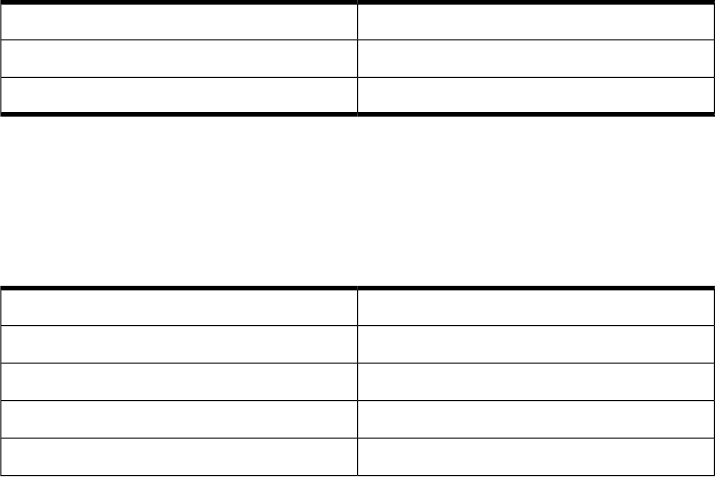LDAP-UX Client Services B.04.15 with Microsoft Windows Active Directory Server Administrator's Guide (edition 8)
Table Of Contents
- LDAP-UX Client Services B.04.15 with Microsoft Windows Active Directory Administrator's Guide
- Table of Contents
- Preface
- 1 Introduction
- 2 Installing LDAP-UX Client Services
- Before You Begin
- Summary of Installing and Configuring LDAP-UX Client Services
- Planning Your Installation
- Installing LDAP-UX Client Services on a Client
- Configuring Active Directory for HP-UX Integration
- Step 1: Install Active Directory
- Step 2: Install SFU 2.0, 3.0 or 3.5 including Server for NIS
- Step 3: Create a Proxy User
- Step 4: Add an HP-UX Client Machine Account to Active Directory
- Step 5: Use ktpass to Create the Keytab File for the HP-UX client machine
- Step 6: Add POSIX Attributes into the Global Catalog
- Importing Name Service Data into Your Directory
- Configuring LDAP-UX Client Services
- Step 1: Run the Setup Program
- Step 2: Install the PAM Kerberos Product
- Step 3: Configure Your HP-UX Machine to Authenticate Using PAM Kerberos
- Step 4: Configure the Name Service Switch (NSS)
- Step 5: Configure the PAM Authorization Service Module (pam_authz)
- Step 6: Configure the Disable Login Flag
- Step 7: Verify LDAP-UX Client Services for Single Domain
- Step 8: Configure Subsequent Client Systems
- Configuring the LDAP-UX Client Services with SSL or TLS Support
- Downloading the Profile Periodically
- 3 Active Directory Multiple Domains
- 4 LDAP-UX Client Services with AutoFS Support
- 5 LDAP Printer Configurator Support
- 6 Dynamic Group Support
- 7 Administering LDAP-UX Client Services
- Using the LDAP-UX Client Daemon
- Integrating with Trusted Mode
- SASL GSSAPI Support
- PAM_AUTHZ Login Authorization
- Policy And Access Rules
- How Login Authorization Works
- PAM_AUTHZ Supports Security Policy Enforcement
- Policy File
- Policy Validator
- Dynamic Variable Support
- Constructing an Access Rule in pam_authz.policy
- Static List Access Rule
- Dynamic Variable Access Rule
- Security Policy Enforcement with Secure Shell (SSH) or r-commands
- Adding Additional Domain Controllers
- Adding Users, Groups, and Hosts
- User and Group Management
- Displaying the Proxy User's Distinguished Name
- Verifying the Proxy User
- Creating a New Proxy User
- Displaying the Current Profile
- Creating a New Profile
- Modifying a Profile
- Changing Which Profile a Client is Using
- Creating an /etc/krb5.keytab File
- Considering Performance Impacts
- Client Daemon Performance
- Troubleshooting
- 8 Modifying User Information
- 9 Mozilla LDAP C SDK
- A Configuration Worksheet
- B LDAP-UX Client Services Object Classes
- C Command, Tool, Schema Extension Utility, and Migration Script Reference
- LDAP-UX Client Services Components
- Client Management Tools
- LDAP User and Group Management Tools
- Environment Variables
- Return Value Formats
- Common Return Codes
- The ldapuglist Tool
- The ldapugadd Tool
- The ldapugmod Tool
- The ldapugdel Tool
- The ldapcfinfo Tool
- LDAP Directory Tools
- Schema Extension Utility
- Name Service Migration Scripts
- Unsupported Contributed Tools and Scripts
- D Sample PAM Configuration File
- E Sample /etc/krb5.conf File
- F Sample /etc/pam.conf File for HP-UX 11i v1 Trusted Mode
- G Sample /etc/pam.conf File for HP-UX 11i v2 Trusted Mode
- H Sample PAM Configuration File for Security Policy Enforcement
- Glossary
- Index

ldapschema — The Schema Extension Tool
The ldapschema utility allows schema developers to define LDAP schemas using a universal
XML syntax, greatly simplifying the ability to support different directory server variations. It
can be used to query the current status of the LDAP schema on the LDAP directory server, as
well as extend the LDAP directory server schema with new attribute types and object classes.
The ldapschema utility was designed to support directory servers from several vendors and
is currently supported with Netscape Directory Server/Red Hat Directory Server and Microsoft
Windows Active Directory Server.
Syntax for ldapschema
ldapschema -q <schema> -T <ds_type> -V <ds_version> [options]
ldapschema -e <schema> -T <ds_type> -V <ds_version> [options]
Required Command Options
The following describes required options:
-q <schema>
Queries the schema status on the LDAP directory without applying any
changes to the LDAP directory server. The schema definitions can be
obtained from the file name specified in the <schema> argument.
ldapschema checks if any attribute types and/or object classes of the LDAP
schema are already installed on the LDAP server. Also, determines if
definitions installed on the LDAP server match definitions specified in the
schema file being queried. See the “Schema Definition File” section for
details.
-e <schema>
Extends the LDAP directory server schema with attribute types and object
classes defined in the specified schema. Schema definition is obtained from
the schema file. See the “Schema Definition File” section for details. On
most LDAP directory servers this option requires specifying the -D binddn
option and either the -j filename or the -w – option to specify the
credentials of an administrator who has permissions to modify the schema
on the directory server.
-T ds_type
Specifies type of LDAP directory server.
The following types of LDAP directory servers are fully supported by
ldapschema:
Table C-11 Supported Directory Servers
ds_typeType of Directory Server
adsWindows Active Directory Server
rhdsNetscape/Red Hat Directory Server
The ldapschema utility may work with other types of LDAPv3 directory
servers., although its behavior has not been verified.
The following table lists names of LDAPv3 directory servers which are
reserved for future support:
Table C-12 Reserved LDAPv3 Directory Servers
ds_typeType of Directory Server
openldapopenLDAP Directory Server
oracleOracle Internet Directory
eDirectoryNovell e-Directory Server
ibmIBM Tivoli Directory Server
232 Command, Tool, Schema Extension Utility, and Migration Script Reference










